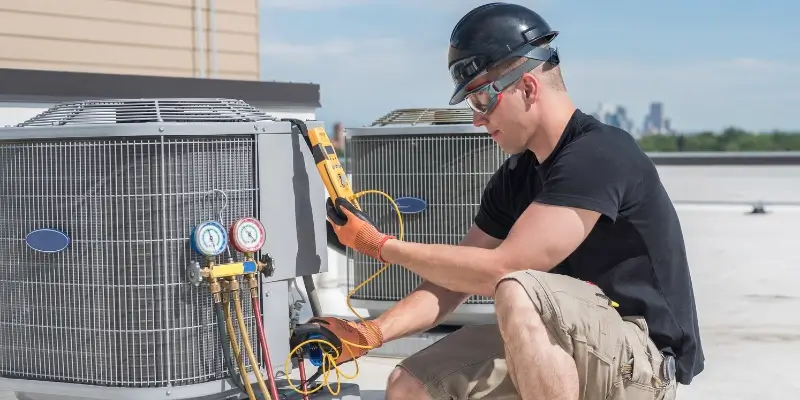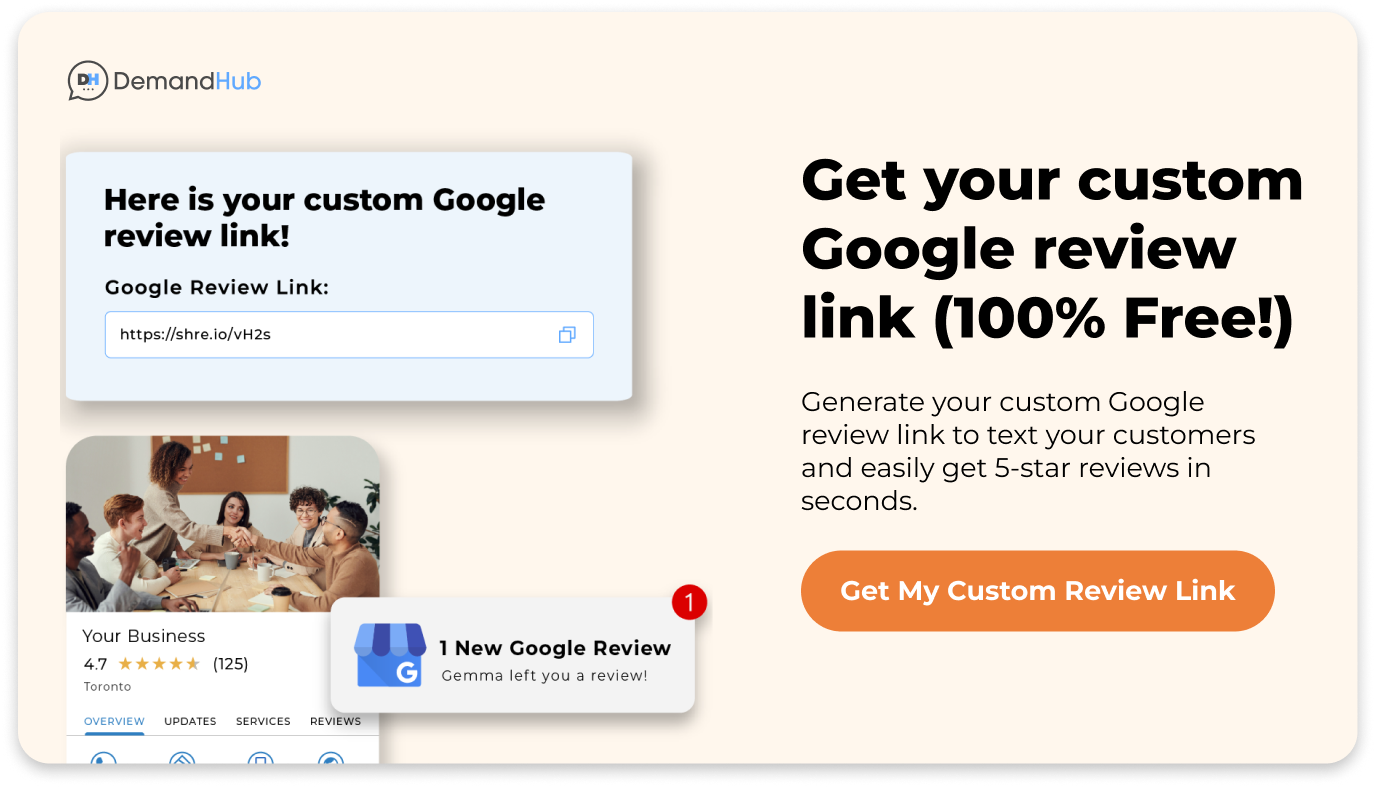Mastering HVAC Business Plans: A Comprehensive Guide with Templates

Diving into the HVAC industry or looking to pump some fresh air into your existing business? Well, you’ve landed in the right spot. Crafting a solid HVAC business plan might sound like just another item on your never-ending to-do list, but trust me, it’s the backbone of your venture’s success.
Whether you’re just starting out or aiming to elevate your game, a well-thought-out business plan is your roadmap to navigating the competitive landscape, securing those all-important funds, and steering your business toward growth.
This comprehensive guide walks you through every step of the process. We’re talking about a no-fluff, straight-to-the-point guide that’ll help you craft a plan as efficient as a top-notch HVAC system.
So, let’s roll up our sleeves and get down to business, shall we?
Bonus: Get a free HVAC business plan template to quickly and easily plan map out your business strategy. It’s a blueprint designed to guide you through each critical component of your business plan, ensuring nothing gets overlooked.
Table of Contents- Key Components of a Successful HVAC Business Plan
- Get your free HVAC Business Plan here
- You’re Now Ready To Create Your Hvac Business Plan
- Frequently Asked Questions about the HVAC Business Plan
Key Components of a Successful HVAC Business Plan
1. Executive Summary
The executive summary is your business plan’s handshake. It’s your first impression on the potential investors, partners, or even key employees.
An effective executive summary is clear, concise, and compelling. It must outline:
- About your business,
- your HVAC business’s mission and values,
- your business goals,
- and why your business is uniquely positioned to succeed.
It’s also the spot to highlight your financial goals and needs, offering a snapshot of your growth plans and how you intend to achieve them.
Think of the executive summary as your elevator pitch in written form. It needs to grab attention, summarizing the most exciting parts of your business plan and encouraging the reader to dive deeper into the details.
Keep your executive summary short (less than one page). The rest of your business plan will provide all the necessary details to your readers.
2. Company Description
A detailed company description is your opportunity to dive deeper into what your HVAC business does, who it serves, and what sets it apart from competitors.
Here’s how you can structure this section:
a. Start with your business’s foundation: Describe when and why you started your HVAC business, the inspiration behind it, and the journey so far. This narrative helps build a connection with the reader.
b. Outline your HVAC services: List your services, such as installation, maintenance, repair, or energy efficiency consultations. Be specific about what makes your services unique or superior to your competitors.
c. Define your target market: Who are your services designed for? Residential homeowners, commercial businesses, or specialized industries? Understanding your target market is crucial for tailoring your business strategies effectively.
d. Explain your unique value proposition (UVP): What makes your HVAC business the go-to option for your target customers? It could be your exceptional customer service, innovative technology use, or commitment to sustainability. Your UVP is what distinguishes you from the competition.
e. Examples for inspiration: Consider including a brief case study or testimonial that showcases your business’s success in solving a particular problem or fulfilling a need within your target market. This real-life example can illustrate your company’s value and effectiveness.
Your company description should paint a clear picture of your business, its values, and its objectives. It’s not just about what you do but why you do it and who benefits from your services.
This section is where your passion and expertise should shine through. It convinces readers that your HVAC business is not just another HVAC company but a vital service provider dedicated to making a difference in people’s comfort and well-being.
3. Understand Your Competitors
Understanding your competitors is not just about knowing who they are but also their strategies, strengths, weaknesses, and market positioning.
Conduct a thorough competitive analysis to ensure your business can discover its niche and stand out.
Here’s how to tackle this:
a. Identify Your Competitors: List direct competitors (those offering similar services in your area) and indirect competitors (those offering substitute or related services).
b. Analyze Their Strategies and Performance: Look into their services, pricing models, marketing tactics, customer reviews, and market reputation. Tools and resources like their websites, social media profiles, and customer feedback can provide invaluable insights.
c. Evaluate Their Strengths and Weaknesses: Pinpoint what they do well and where they fall short. This can help you identify opportunities to differentiate your services or improve upon areas where competitors are lacking.
d. Position Your HVAC Business: Using the information gathered, determine how your business can offer something unique or better. Find your edge, whether it’s superior customer service, innovative technology solutions, or more competitive pricing.
Include a competitive analysis in your business plan. It demonstrates to investors and stakeholders that you have a deep understanding of the market landscape and are prepared to compete effectively.
This section should showcase your knowledge of the competition and how your HVAC business is positioned for success in comparison.
4. Operational Plan
The operational plan of your HVAC business lays out the nuts and bolts of daily operations. It tells how your company functions on a foundational level. This includes:
a. Legal Structure: Decide on the legal structure of your business (e.g., sole proprietorship, partnership, LLC, corporation). Each has its implications for liability, taxes, and operational complexity. So, choose the one that best suits your business size and goals.
b. Location: Your business location should be strategically chosen based on your target market, accessibility for employees and customers, and the logistics of your service area. Whether you’re operating from a commercial space or a home office, ensure it supports efficient operations.
c. Equipment Needed: Detail the equipment necessary to provide your HVAC services. It includes tools for installation, repair, maintenance, and any computers and vehicles for transportation. Also, consider the technology needed for business operations, such as HVAC scheduling software or customer relationship management (CRM) systems.
d. Operational Workflow: Describe the workflow of your services, from customer inquiry and service scheduling to job completion and follow-up. This includes how appointments are booked, how services are priced and invoiced, and how customer feedback is collected and addressed.
e. Supply Chain: Identify your suppliers for HVAC units, parts, and other necessary materials. Establishing reliable supplier relationships is crucial for maintaining service quality and efficiency.
f. Staffing: Outline your staffing needs, including technicians, customer service representatives, and any administrative or managerial roles. Include plans for recruitment, training, and retention to ensure a skilled and motivated workforce.
Your operational plan should provide a clear roadmap of your HVAC business’s daily functions. It showcases your strategy for delivering services efficiently and effectively. It also informs stakeholders about the practical aspects of your business and demonstrates your preparedness to manage the operational challenges of the HVAC industry.
5. Marketing Strategy
A dynamic and multi-faceted marketing strategy for HVAC businesses is key to attracting and retaining customers. In an industry where trust and reliability are paramount, how you promote your company can make a significant difference in its growth and success.
In this section, write down your current sales and marketing strategies, as well as any new ones you’ll be using this year, such as:
a. HVAC Website: Your digital storefront. Ensure it’s user-friendly, mobile-responsive, and optimized for search engines. Highlight your services, customer testimonials, and contact information prominently.
b. Social Media Marketing: Platforms like Facebook, Instagram, and LinkedIn can help you connect with your community, share valuable tips on HVAC maintenance, and promote special offers.
c. Lead Generation Sites: Use platforms like DemandHub, HomeAdvisor, or Angie’s List to capture leads from customers actively looking for HVAC services.
d. Facebook Page for Your Business: Regularly update your business page with engaging content, service promotions, and helpful HVAC tips to keep your audience engaged and informed.
e. Customer Referral Program: Encourage word-of-mouth marketing by rewarding customers who refer new clients to your business. This can be a powerful tool in building a loyal customer base.
f. Local Services Ads on Google: Take advantage of Google’s Local Services ads to appear at the top of search results when people search for HVAC services in your area.
g. HVAC Business Cards, Flyers, or Door Hangers: Don’t underestimate the power of traditional marketing. Well-designed print materials can be a cost-effective way to reach local customers.
h. Sales Team Strategy: If you have a sales team, outline their roles, responsibilities, and compensation. Detail your strategies for training them on making effective sales calls and converting leads into customers.
For each marketing tactic, setting a budget and measuring the return on investment (ROI) is essential. Estimate your spending for each activity (e.g., $960 to print postcards, $250 for a DIY website) and plan your marketing budget accordingly.
This approach will help you allocate resources effectively and ensure your marketing efforts are targeted and efficient.
6. Financial Projections
Realistic financial projections are crucial for the success of your HVAC business. These projections help you, potential investors, and financial institutions understand the viability of your business model.
Here’s how to approach this:
a. Startup Costs: List all the initial expenses required to get your business off the ground. This includes equipment purchases, vehicle costs, licensing fees, initial marketing expenses, and any other capital investment needed to start operating.
b. Revenue Forecasts: Estimate your sales for the first 3-5 years. Consider factors such as the size of your target market, pricing strategy, and expected market share growth. Be conservative in your estimates and base your projections on realistic market research.
c. Break-even Analysis: Calculate the point at which your business will start to generate a profit. This involves determining the fixed and variable costs and identifying how much revenue is needed to cover these costs. Knowing your break-even point is essential for setting financial goals and assessing the financial health of your business.
d. Profit and Loss Statement: Project your income and expenses over time to show potential profitability. This should include direct costs (like materials and labor), indirect costs (such as marketing and utilities), and your expected profit margins.
e. Cash Flow Projections: Analyze the inflow and outflow of cash to ensure you have enough liquidity to cover day-to-day operations. Positive cash flow is essential for the sustainability of your business.
f. Capital Requirements: If you’re seeking investment or loans, clearly outline how much funding you need and how you’ll use it. This demonstrates to investors that you have a clear plan for using their capital to grow your business.
Financial projections should be based on thorough research and realistic assumptions. They help you plan for the future and demonstrate to stakeholders that your HVAC business is a sound investment.
Get your free HVAC Business Plan here
You’re Now Ready To Create Your Hvac Business Plan
With DemandHub’s HVAC business plan template, you can assess every aspect of your business, pinpoint areas that require improvement, and maintain focus on the overall vision.
After completing your business plan, you’ll be equipped to attract more clients and run a successful HVAC business.
Frequently Asked Questions about the HVAC Business Plan
How Profitable Is the HVAC Industry?
The HVAC industry is highly profitable, with strong demand driven by the need for heating and cooling systems in residential, commercial, and industrial buildings. Profitability depends on service quality, market positioning, and operational efficiency.
What Is an HVAC Business Plan?
An HVAC business plan is a detailed document outlining your business’s goals, strategies, market analysis, operational structure, and financial projections. It is a roadmap for starting and growing your HVAC business, attracting investors, and managing your company effectively.
How Do I Get More Business in HVAC?
To get more business in HVAC, focus on quality service, build a solid online presence, engage in local marketing efforts, offer competitive pricing, and create referral programs. Networking with real estate agents and contractors can also generate new leads.
How Can I Make a Lot of Money in HVAC?
If you want to make a lot of money in HVAC, then:
- specialize in high-demand services,
- focus on customer satisfaction to generate repeat business and referrals,
- Expand your service area,
- and continuously improve your team’s skills and efficiency.
Offering maintenance contracts can also provide steady income.




